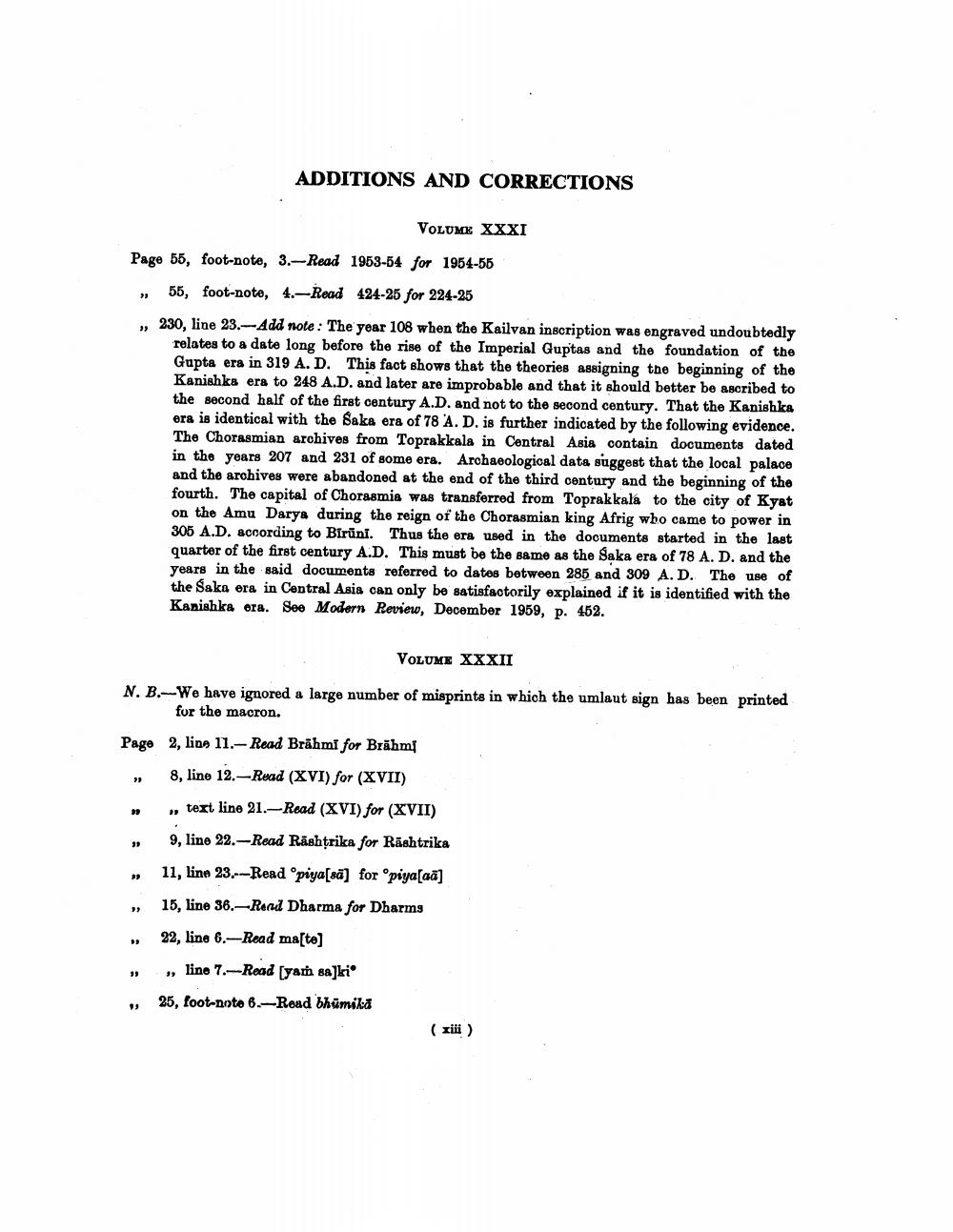________________
ADDITIONS AND CORRECTIONS
VOLUME XXXI
Page 55, foot-note, 3.-Read 1953-54 for 1954-55 , 55, foot-note, 4.-Road 424-25 for 224-25 „ 230, line 23.--Add note : The year 108 when the Kailvan inscription was engraved undoubtedly
relates to a date long before the rise of the Imperial Guptas and the foundation of the Gupta era in 319 A. D. This fact shows that the theories assigning the beginning of the Kanishka era to 248 A.D. and later are improbable and that it should better be ascribed to the second half of the first century A.D. and not to the second century. That the Kanishka era is identical with the Saka era of 78 A. D. is further indicated by the following evidence. The Chorasmian archives from Toprakkala in Central Asia contain documents dated in the years 207 and 231 of some era. Archaeological data suggest that the local palace and the archives were abandoned at the end of the third century and the beginning of the fourth. The capital of Chorasmia was transferred from Toprakkala to the city of Kyat on the Amu Darys during the reign of the Chorasmian king Afrig who came to power in 306 A.D. according to Biruni. Thus the era used in the documents started in the last quarter of the first century A.D. This must be the same as the Saka era of 78 A. D. and the years in the said documents referred to dates between 286 and 309 A. D. The use of the Saka era in Central Asia can only be satisfactorily explained if it is identified with the Kanishka ora. See Modern Review, December 1959, p. 452.
VOLUME XXXII
N. B.-We have ignored a large number of misprints in which the umlaut sign has been printed
for the macron. Page 2, line 11.- Read Brāhmi for Brāhmi
8, lino 12.- Read (XVI) for (XVII) „ text line 21.- Read (XVI) for (XVII)
9, line 22.-Read Rāshtrika for Răshtrika
11, line 23.--Read Opiya[sā] for opiya[aa] » 15, line 36.-Rond Dharma for Dharms
22, line 6.-Read maste] „ „ line 7.-- Read (yansa]kio ,, 25, foot-noto 6.—Read bhumika




